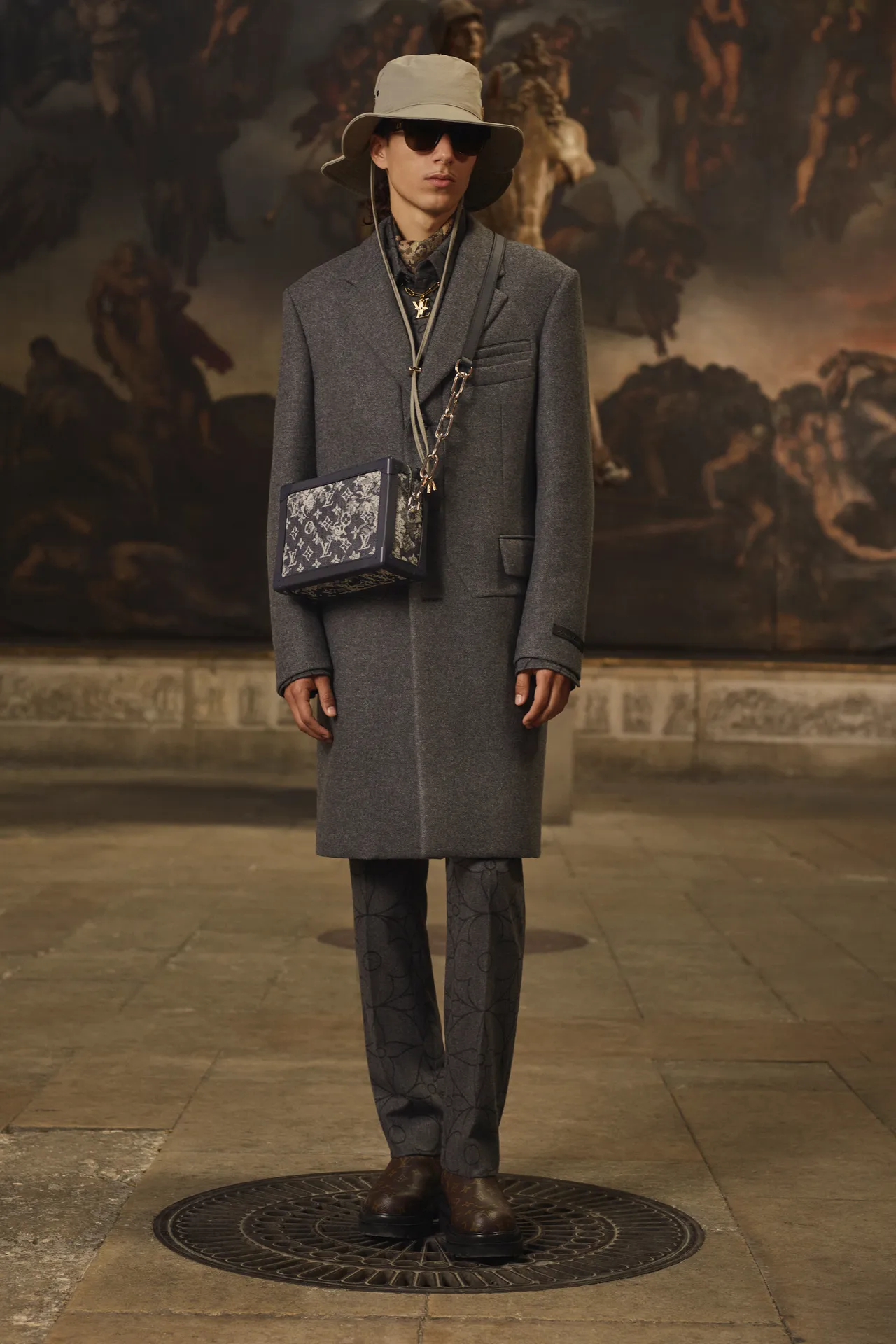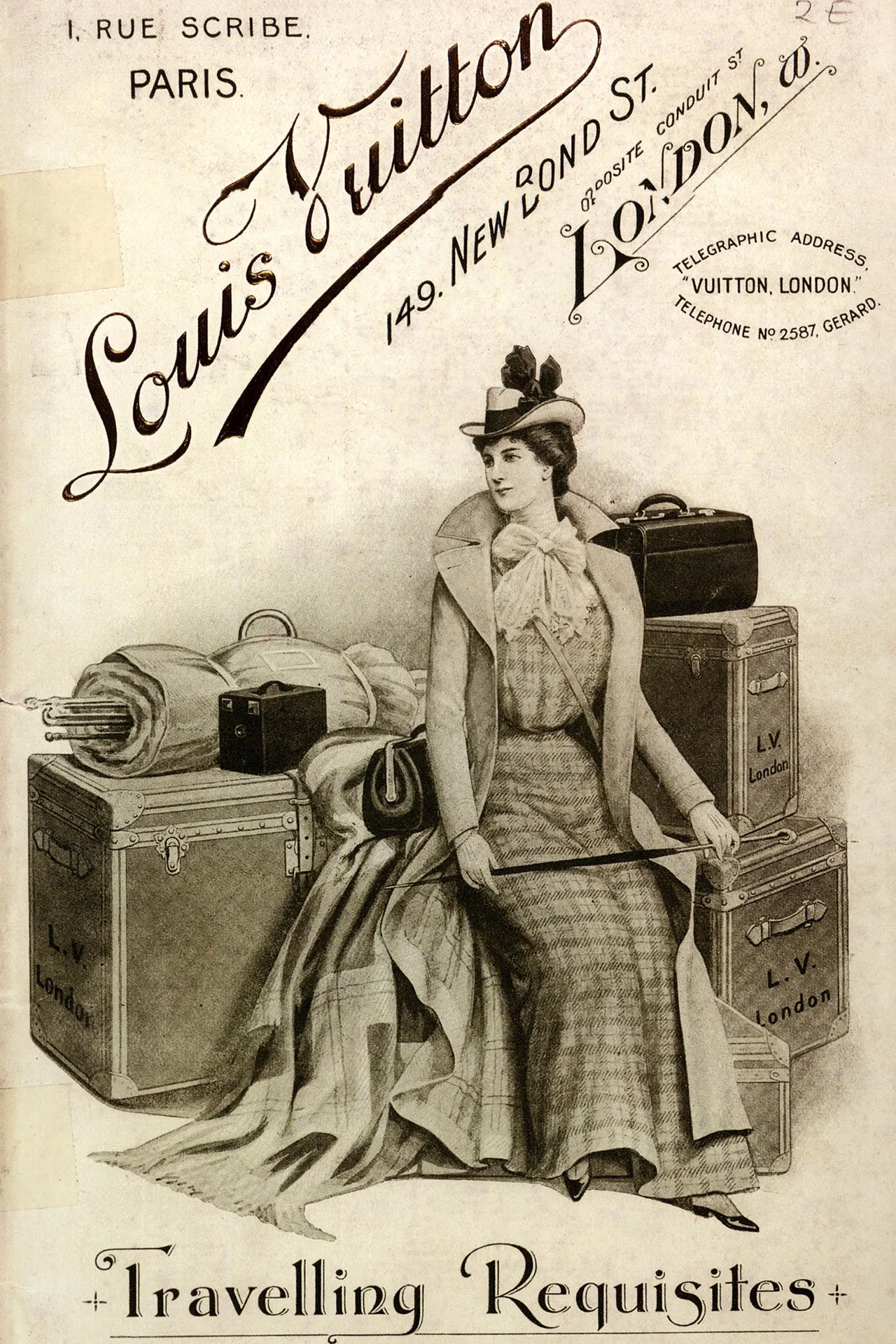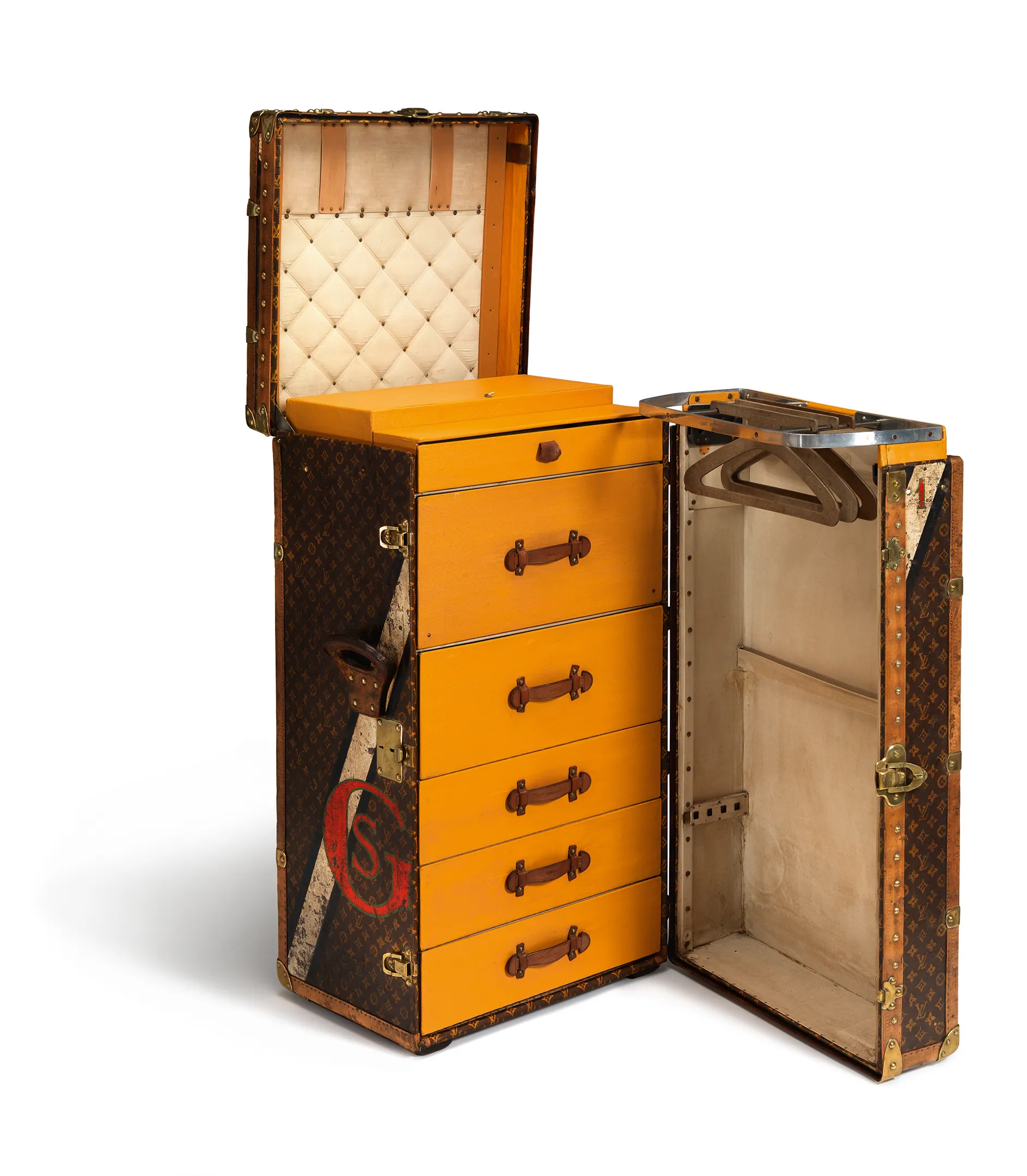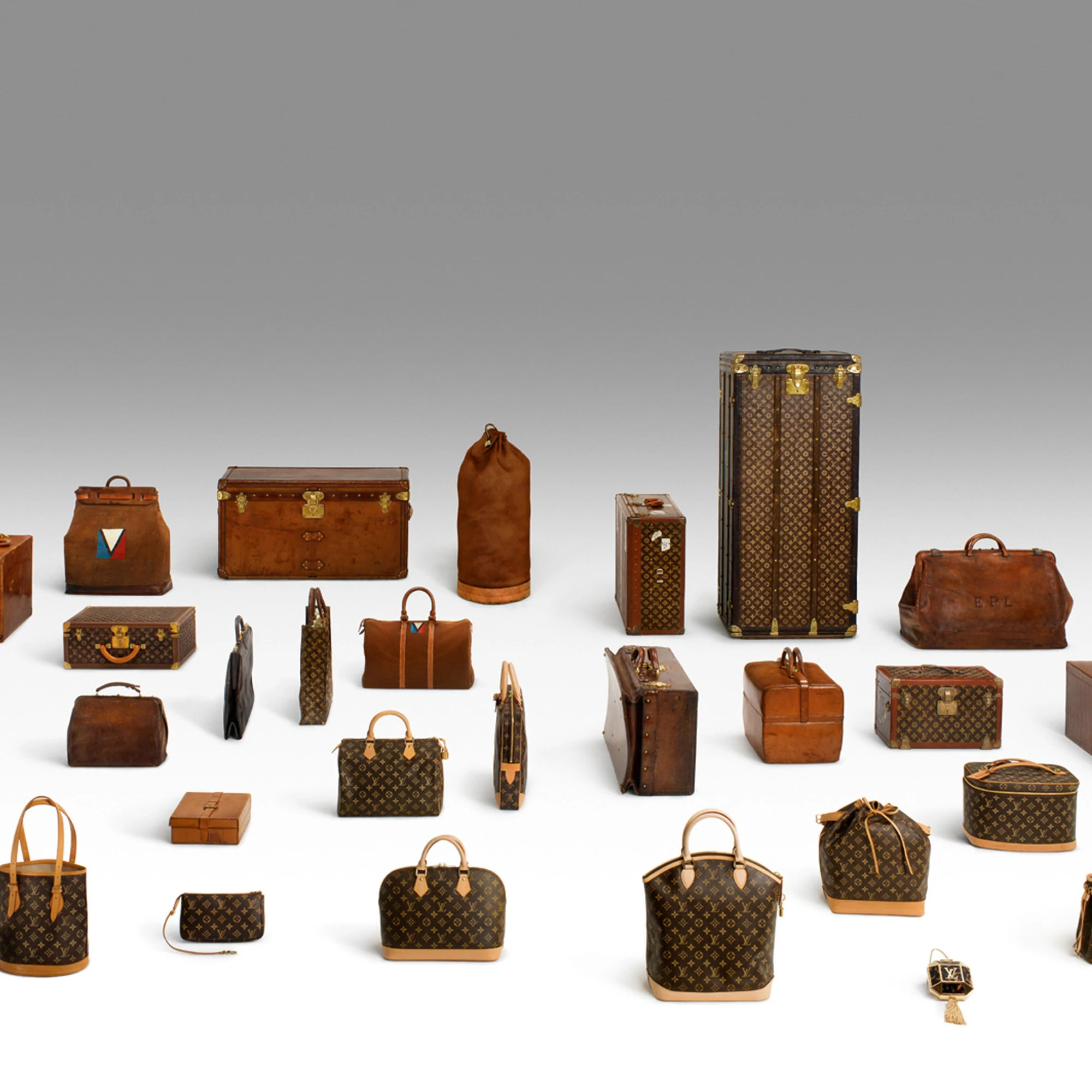[Louis Vuitton] Louis Vuitton Origin, Louis Vuitton History, Louis Vuitton Character Summary

1. Louis Vuitton
Louis Vuitton is a French entrepreneur and designer who founded the iconic fashion house that bears his name. Today, one of the world's leading international fashion houses, the brand operates in 50 countries with more than 460 stores worldwide. Designer Vuitton is welcomed by a humble Sudan family, and through his ingenuity, creativity and thorough effort he has become one of the most famous names in the world of luxury goods.
Born to working-class parents in rural France in the 19th century, he had to make a living as a carpenter, joiner or farmer. However, the ambitious little boy decided to find his fortune in Paris and left his home at the age of 13. Arriving in Paris after two years, he became an apprentice at a successful box maker's workshop. Boxmaking provided ample opportunity to express your creativity and soon earned a reputation as one of Paris' most fashionable boxers. Eventually, he discovered the Louis Vuitton label in 1854, which became incredibly popular within a few years. He managed his company until his death in 1892.

2. Before/After Moving to LVMH
As a young Louis Vuitton whose father was a carpenter, his original dream was to become a carpenter. But he wanted to see the wider world, and in 1835, at the age of 15, Louis left his hometown and headed for Paris. At that time, there were no cars or trains. He arrived in Paris after a year, earning money for travel in a restaurant or stall on his way to Paris.
Louie went in blindly after seeing a job advertisement for a bag store. In Paris, in addition to selling bags at a handbag store, she worked as a bag for the wealthy. There, Louie starts packing things. Packing his bag well, his skills became famous in Paris and even spread rumors to the imperial court of Napoleon III. Empress Eugenie, wife of Napoleon III, is famous for carrying a lot of her clothes. When she went on a trip to another country, she only carried about 300 sets of clothes, but she only carried about 1.8 tons of clothes since the lady the lady wore at the time was about 6 kg. It was Louis Vuitton who helped keep clothes from wrinkling.

One day, Louis was working for the imperial family while packing for the empress and getting recognition for her skills until she was over 30 years old! At the age of 33, he became an expert on bags through the work of a packer, and with the patronage of the Empress, he opens a suitcase store that bears his name. Leaving his hometown alone at such a young age must have been a great adventure, but I wonder how he felt when he left.
At the time, packing was just a chore. However, if you work hard on even the smallest things and have your own know-how, you can see that people will recognize and support you. After that, if you continue to develop your strengths and work hard, you will become his masterpiece.
Isn't this a lesson from Louis Vuitton? It gave me a chance to feel again that luxury is not really just for everyone.
With the development of transportation, the wealthy increased, and the ladies carried expensive clothes whenever they traveled. In 1854, Louis Vuitton created a rectangular trunk made of gray trianon canvas. It was the world's first square trunk! It can be stacked and the waterproof canvas is waterproof, and there is a divider inside, so you can organize it efficiently. With the trunk, he became famous not only as a packer, but also as a producer, and five years after opening a shop, he established a factory and had hundreds of employees. In 1859, he passed the business on to his son Georges Vuitton, who was as brilliant in ideas and craftsmanship as Louis, and won a bronze medal at the 1867 World's Fair in Paris.

Who else comes to mind when you think of the Paris World's Fair? In 1867 Thierry Hermes took first place. His son Charles-Emile Hermes was awarded in 1878. Then, Louis Vuitton's sons, Georges Vuitton and Thierry Hermes, participated in the same fair and achieved excellent results!!
As popular as it was, even at the time, Louis Vuitton had a lot of counterfeit products, and Georges was in trouble. In 1872, the first anti-counterfeiting striped trunk was born. Georges Vuitton made a practical travel bag with a groundbreaking idea, and it expanded its business to the world by opening stores in London and New York in 1885.

But again the imitation again. To prevent counterfeiting, a second 1988 'damier' pattern is introduced. 'Damier' is the signature pattern of the current Louis Vuitton! At that time, under the influence of the aristocratic society in the 19th century, it became a luxury brand and many counterfeit products were created. Despite the 'damier' pattern, he struggled with counterfeiting again, this time taking his father's initials L and V to prevent the last third. In 1896, today's Louis Vuitton iconic monogram was born.
Georges even registered a trademark to prevent further counterfeiting, and subsequently sued all counterfeit products. After that, Georges used the monogram to create a tea set trunk for kettles and teacups, a trunk for storing typewriters, and engraving the bag owner's initials for travelers. It can't be a luxury product only with innovative design and practical travel bag, right? Durability is the most important thing in a travel bag!. He took the bag himself and went to the experiment for the bag experiment. Louis Vuitton bags are still famous for their craftsmanship and durability.
The western part of Paris gradually developed, and in 1914 Louis Vuitton moved to its current headquarters, the Champs Elysees in Paris. As Louis Vuitton's fame grew, the nobility became more sought after, and it did not go away in World War II in 1940.
The famous Chanel also closes during this time. The Germans invaded Paris, but they survived because they were already fascinated by Louis Vuitton. After the war, the era no longer needed rigid trunks. Because that was the time when automobiles were born.

Soft bags are made to cope with the changing times, but plain fabrics were not popular, and monogram fabrics were too thick to hit the railings. Georges' son created a soft monogram canvas, and in 1932 Gaston created the first soft bag 'Noe'. 'Noe' was not as soft as cotton, and in 1959, the monogram was completed using the same material as cotton. In 1966, the 'Pavillon Bag' was born. Soft bags are cheaper and more comfortable than trunks, so their popularity has spread to Asia. Louis Vuitton, which came to Japan, was so expensive that Japanese people had to go to France. In 1978, Louis Vuitton opened stores in Tokyo and Osaka, Japan, and in 1985 the 'Epi' line continued to be successful.
But, crisis comes to everyone, right? In 1980, as people's tastes became more diverse, Louis Vuitton was branded as an outdated brand, making it difficult to run a family business. The person who appeared at this time was 'Bernard Ardot', who graduated from the French National Administrative School. However, Louis Vuitton, which was falling apart, became a world-class brand that was superior to its former values through his management.
In 1997, as Louis Vuitton's new art director 'Marc Jacobs', he launched a clothing line and created the 'Berni' line. And 'graffiti' was also created by Marc Jacobs and became popular. In collaboration with Japanese artist Takashi Murakami, we launched Monogram Multicolor.
3. Descendants of Louis Vuitton
What happened to the descendants of Louis Vuitton? Although management has already passed, he is said to be in charge of special order production and promotion as a manufacturing engineer. These include baby bottle cases and cake boxes.
The service of engraving initials is still the same as it was 100 years ago, and we continue to make custom orders for customers just like royalty. There are 'Hot Stamping', a free signature engraving on suitcases and leather accessories, 'Special Order' on custom bags, and 'Monong Monogram', which puts the desired color and initials on a monogram pattern. One example is Yuna Kim's skate bag?




댓글